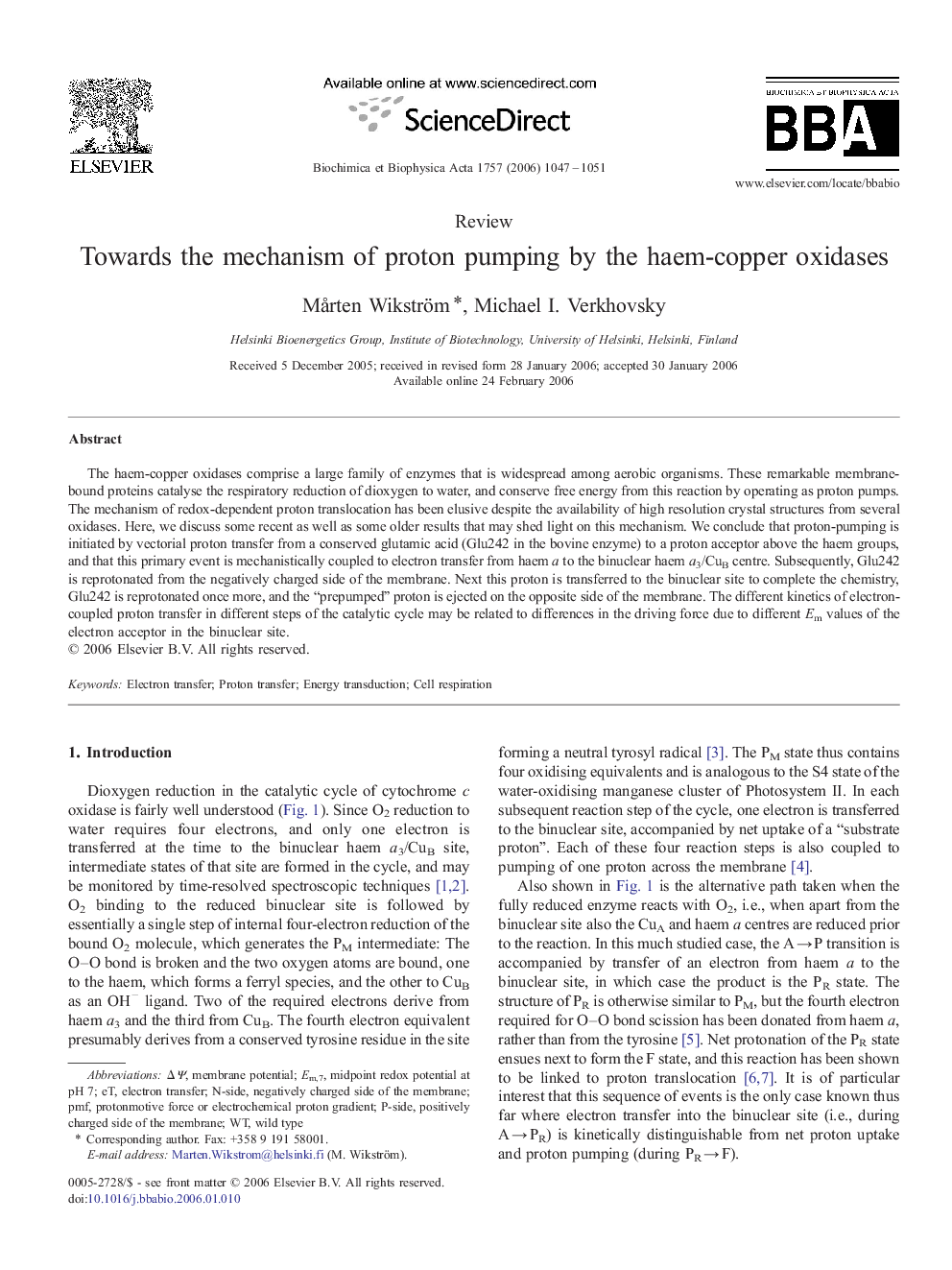| Article ID | Journal | Published Year | Pages | File Type |
|---|---|---|---|---|
| 1943665 | Biochimica et Biophysica Acta (BBA) - Bioenergetics | 2006 | 5 Pages |
The haem-copper oxidases comprise a large family of enzymes that is widespread among aerobic organisms. These remarkable membrane-bound proteins catalyse the respiratory reduction of dioxygen to water, and conserve free energy from this reaction by operating as proton pumps. The mechanism of redox-dependent proton translocation has been elusive despite the availability of high resolution crystal structures from several oxidases. Here, we discuss some recent as well as some older results that may shed light on this mechanism. We conclude that proton-pumping is initiated by vectorial proton transfer from a conserved glutamic acid (Glu242 in the bovine enzyme) to a proton acceptor above the haem groups, and that this primary event is mechanistically coupled to electron transfer from haem a to the binuclear haem a3/CuB centre. Subsequently, Glu242 is reprotonated from the negatively charged side of the membrane. Next this proton is transferred to the binuclear site to complete the chemistry, Glu242 is reprotonated once more, and the “prepumped” proton is ejected on the opposite side of the membrane. The different kinetics of electron-coupled proton transfer in different steps of the catalytic cycle may be related to differences in the driving force due to different Em values of the electron acceptor in the binuclear site.
